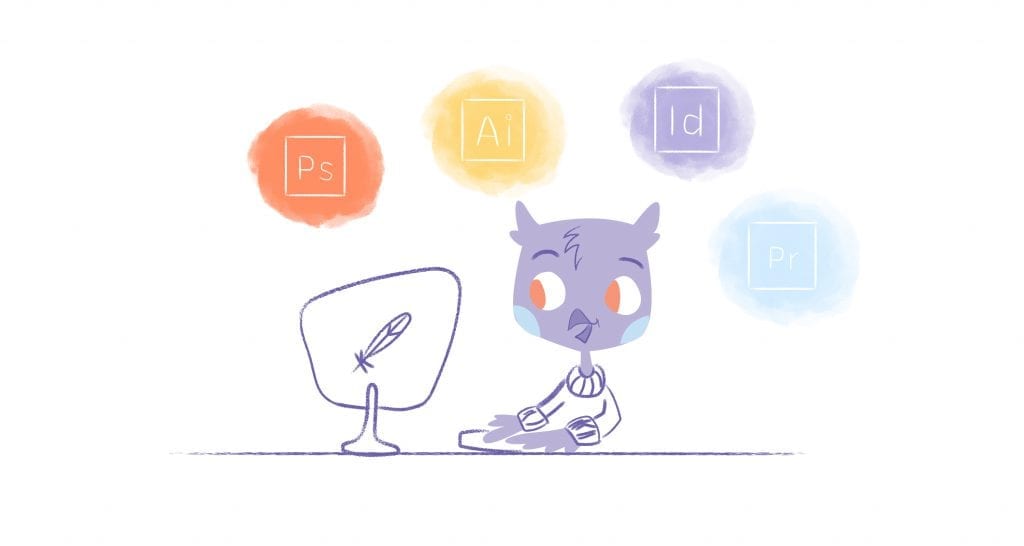

It’s hard not to think about what you are grateful for during this time of year. That’s a no-brainer for many of us.
One reason for this is that November is National Gratitude Month, a time when people reflect on what they’re thankful for. Thanksgiving also takes place in November, when people gather with family and friends to thank and appreciate people who have brought them blessings.
The thing is, gratitude and thankfulness are often used interchangeably. It is important to note, however, that there is a subtle difference between them.
To put it simply, gratitude is being thankful in an attitude of appreciation. Gratitude, on the other hand, is a feeling evoked by an experience or event in our lives.
Here’s a look at the difference between thankful and grateful and how you can practice them regularly.
Gratitude
Gratitude is a complex emotion that has been studied by psychologists for many years. It is defined as a feeling of thankfulness and appreciation for the good things in our lives, both big and small. Gratitude can be directed towards people, experiences, possessions, or even just the simple fact of being alive.
You can enhance your health and well-being by cultivating gratitude in your life. In fact, a study from the University of California Berkeley states, “Research suggests that gratitude may be associated with many benefits for individuals, including better physical and psychological health, increased happiness and life satisfaction, decreased materialism, and more.”
When you are grateful, you are at peace with the way your life is going. Gratitude may not always bring you happiness, but you can still practice it. As the same Berkeley study indicates, practicing gratitude not only strengthens your emotional health but also strengthens your relationship with others.
There are many ways to practice gratitude. One simple way is to keep a gratitude journal. Each day, write down a few things that you are grateful for. It can be anything from your health and family to the warm cup of coffee you just enjoyed.
Another way to practice gratitude is to express it to others. When someone does something nice for you, be sure to tell them how much you appreciate it. You can also express gratitude to your friends and family by telling them how much they mean to you.
Finally, you can also practice gratitude by simply taking the time to notice the good things in your life. Pay attention to the beauty of nature, the kindness of strangers, and the small joys of everyday life.
Thankfulness
The act of being thankful, on the other hand, happens when you receive some kind of benefit. A key difference between gratitude and thankfulness is that thankfulness is typically associated with materialism, which gratitude practitioners do not practice.
It has been shown that people who understand their attitudes toward materialism are more grateful than people who are aware of their sense of materialism.
In other words, thankfulness is a reaction. For example, someone holds a door open for you or buys you a cup of coffee. In this moment, you are thankful and happy. However, being thankful is a brief emotional response to a fleeting situation.
The Difference Between Gratitude and Thankfulness
What is the best way to tell if you are operating from a gratitude spirit? It has already been discussed that gratitude is an important part of keeping a healthy psychological outlook, but thankfulness is closely related to gratitude. So, how do they differ?
- While gratitude remains, thankfulness fades. It’s common for gratitude to start as thankfulness, but gratitude becomes stronger when you keep focusing on what remains. To put it another, gratitude sticks around longer then thankfulness.
- Thankfulness deepens our external connections, whereas gratitude deepens our internal connections. Whenever something external occurs, we feel thankful. The power of gratitude lies in relying on our inner voice to remain positive and grateful regardless of the circumstances.
- Gratitude improves long-term relationships, while thankfulness focuses on the present interaction. Currently, you may feel thankful to someone. However, gratitude is an ongoing gesture of appreciation for the people in your life. When you practice gratitude in your relationships, you will become closer to them.
Even though gratitude and thankfulness are closely linked, gratitude provides a feeling of long-term satisfaction and improvement in well-being. Individuals can benefit from practicing gratitude in many ways.
How to Practice Gratitude
The way you practice gratitude doesn’t matter. In any case, gratitude should be an expression of your own thankfulness. However, many people find that physical acts of gratitude increase and maintain their happiness over the long run.
The following suggestions can help you develop a gratitude practice of your own. By practicing gratitude, you ensure resilience during difficult times, according to John Hopkins. It is possible to reduce the risk of depression by maintaining a positive attitude.
Start your day with gratitude.
Spend a few minutes thinking about three things you’re grateful for when you wake up in the morning. Your home, your job, or your health could be among these things. Taking the time to write down your gratitude can help you put your life into perspective.
End your day with gratitude.
Before going to bed, take some time to reflect on anything good that happened that day. Your appreciation could come from something as simple as a kind gesture from a stranger or a delicious meal.
Keep a gratitude journal.
Keep a gratitude journal and write down the things that you are thankful for every day. Your gratitude can also be expressed through writing about specific moments or people who have influenced your life positively.
Practice mindful gratitude.
You should take some time to appreciate something that you enjoy when you are doing it. If you’re eating a meal, for example, take a moment to savor each bite and realize how grateful you are for it.
Look for the good in every situation.
You should always be thankful, no matter what. Your health and well-being could be just as important as having people around you who care for you.
Express your gratitude to others.
Don’t forget to thank the people who matter to you such as your family or coworkers. An expression of appreciation could be as simple as a thank you note or as elaborate as a thoughtful gift.
In addition to these tips, here are some other ways you can practice gratitude:
- Make sure you are specific. Give specific examples of what you are grateful for when you think about what you are grateful for. As an example, instead of saying, “I’m grateful for my health,” say, “I’m grateful for being able to walk pain-free.”
- Be present. Whenever you are practicing gratitude, be aware of the present moment. Avoid dwelling on the past or worrying about the future. Be thankful for the good things happening right now.
- Take note of your surroundings. Spend a few minutes each day observing the world around you and appreciating its beauty, kindness, and simplicity.
- Be genuine. Gratitude should be expressed from the heart. If you don’t really feel grateful for something, don’t force yourself to be grateful.
- Get inspired by others. Watch videos of people sharing their gratitude stories, or read books and articles about gratitude. As you learn more about gratitude, you may be inspired to practice it.
- Don’t overlook the little things. Our lives are filled with good things that we often take for granted. Remember, however, that gratefulness can be found in even the smallest things. You might be grateful for the hot shower you take every morning, the delicious food you eat, or the comfortable bed you sleep in.
You have to put in some effort to cultivate gratitude, but the results are worth it. In addition to reducing stress and improving our overall well-being, gratitude can help us appreciate the good things in life.
FAQs
How do gratitude and thankfulness differ?
In contrast to thankfulness, gratitude is a more profound emotion. It’s a feeling of appreciation for both big and small things in your life.
In many cases, thankfulness arises from something specific, such as someone holding the door open for you. Gratitude, however, is a more lasting emotion that arises from reflecting on the many things you are thankful for.
What are the benefits of gratitude?
Studies have shown that gratitude has a number of health benefits, both mental and physical. The benefits of gratitude include:
- Happiness and mood are improved.
- Become less stressed and anxious.
- Increases the immune system’s strength.
- Improves the quality of sleep.
- Resilience in the face of adversity.
- Relationships are strengthened.
- Enhances prosocial behavior.
- Contributes to a more fulfilling life.
What are some common myths about gratitude?
The following myths about gratitude are common:
- Gratitude is only for positive people. You shouldn’t ignore the negative things in your life if you want to be grateful. No matter how tough things get, it’s about choosing to focus on what’s good.
- Practicing gratitude is selfish. The act of gratitude is actually quite selfless. A grateful person appreciates the good things in his or her life, including the people and things that enrich the quality of their lives.
- Gratitude is just a buzzword. There are real benefits to gratitude. The practice can be practiced by anyone, regardless of their circumstances.
How can I be grateful during difficult times?
When you are going through a tough time, it is difficult to feel grateful. It is still possible to be grateful in the midst of adversity. A few tips to keep in mind:
- Focus on the small things. Even just living is something you are grateful for, whether it’s a warm bed to sleep in, a loving family, or just being alive.
- Practice gratitude journaling. You can focus on the positive aspects of your life if you write down the things you are grateful for, no matter how small they may seem.
- Talk to someone you trust about how you are feeling. When you express your gratitude to others, you feel more connected and supported.
- Remember that difficult times are temporary. Eventually, things will improve.
How can I incorporate gratitude and thankfulness into my workplace?
It is possible to incorporate gratitude and thankfulness into your workplace in a variety of ways. It might be a good idea to start your team meetings by asking everyone to share something they are grateful for.
Also, you may want to thank a colleague who has helped you out or who has done a great job In addition, you can organize a team-building activity that emphasizes gratitude, such as writing letters of appreciation to customers or volunteering for a local charity.
Image Credit: Towfiqu barbhuiya; Pexels











John Rampton
John’s goal in life is to make people’s lives much more productive. Upping productivity allows us to spend more time doing the things we enjoy most. John was recently recognized by Entrepreneur Magazine as being one of the top marketers in the World. John is co-founder and CEO of Calendar.